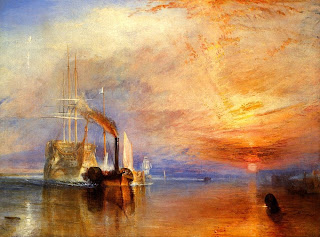 Anthony Morris at the Queens Borough Public Library where he worked off his debt for past due library fines.
Anthony Morris at the Queens Borough Public Library where he worked off his debt for past due library fines. March 26, 2009
It Has Computers, Gives Advice and Is Free
By JOSHUA BRUSTEIN
Anthony Morris’s job search hit a snag this month when the Queens Borough Public Library notified him that he could not get a new library card until he paid about $80 in fines.
Mr. Morris, 31, had been unemployed for eight months and did not have the money. But he had amassed an armful of library books he needed to prepare for an exam that was part of the application process for a job at Con Edison, and he also needed a library card to browse online classified sites. So he asked if he could work off his debt.
After 22 hours of sorting books in the reference section at the Jamaica branch, Mr. Morris got his library card — and was asked to apply for a part-time position at the library.
“It’s just minimum wage, but it beats a blank,” said Mr. Morris, who lives nearby and previously worked at a chemical plant that manufactured leather dyes. He is waiting to hear whether he got the job.
While such direct results are certainly rare, the city’s public libraries are increasingly serving as makeshift employment centers. At the 58th Street branch of the New York Public Library in Manhattan, out-of-work professionals crowd the computers in the afternoon, a time that had previously been dominated by elderly patrons, and books on résumé writing are hard to keep on the shelves. The Science, Industry and Business Library on 34th Street drew 700 people to a career preparedness fair in January, and the Bronx Library Center recently doubled the number of computer classes it offers to the elderly because people looking to re-enter the work force had packed the existing classes to overflow levels.
“We’ve been in the job-search business for decades,” said Paul LeClerc, the president of the New York Public Library, noting that President Obama has said that a librarian helped him find his first job as a community organizer. “This is a continuation.”
The new role comes amid a broader surge in demand for libraries’ free goods and services that is typical during economic downturns. In the fourth quarter of 2008, circulation rose 16 percent compared with the previous year at the New York Public Library, which serves Manhattan, the Bronx and Staten Island; 9 percent at the Brooklyn Public Library; and 2 percent in Queens. All three systems also report significant increases in the number of visits.
But the libraries are facing steep cuts in the mayor’s proposed budget for next year, and have other economic woes. Brooklyn has already shut its branches on Sundays and is considering trimming hours further. This month, a hotel company backed away from its pledge to purchase the Donnell Library, a five-story building on 53rd Street, whose sale was intended to help pay for the $250 million renovation of the New York Public Library’s headquarters on Fifth Avenue.
At the Bronx Library Center, near Fordham University, Janice Moore-Smith, an education and career counselor, has over the years typically helped half a dozen people a day with their résumés. In recent months, it has often been 10. And Ms. Moore-Smith said that she had been scheduling more joint sessions for husbands and wives in which she doles out emotional support along with employment tips.
“I’m doing couples therapy,” she said.
The most common service being sought, librarians said, is computer time. At the Queens Library for Teens in Far Rockaway, more and more teenagers are showing up to sign on, saying their parents have canceled Internet service at home. And with Web sites largely having replaced newspapers as the most common job-listing venues, finding work without Internet access has become increasingly difficult.
Kerwin P. Pilgrim, division manager of the Brooklyn Public Library’s education and job information center, said that he began training 15 staff members to provide individual assistance to job seekers last summer, in anticipation that demand would rise as the economy worsened. In January, the library announced that there would be one such staff member available at all times in at least one branch within each group of four branches.
Until recently, Mr. Pilgrim said, most people who came to the library’s résumé workshops were looking for entry-level jobs. Now, the proportion of professionals in the classes has soared.
“When the banks started going down, we saw some people who had been employed for a long time and had never taken the time to write résumés or work on interviewing skills,” he said. “People got comfortable, and basically their résumés were never updated.”
Mitch Baucus has long been a regular at the Flushing branch of the Queens library, but lately it has transformed from a place of leisure to his virtual office.
When he was working as a legal researcher for a lawyer in Great Neck, Mr. Baucus regularly spent an afternoon each weekend reading newspapers and magazines at the library. Since he was laid off in early December, he has been showing up five or six days a week to scour the Internet for employment opportunities.
He spent several months searching without success, then noticed something he had overlooked.
“I realized there was a person sitting there and his job was to help people with their résumés and interviewing skills,” he said. “So I went up to him and asked him for help.”
An earlier version of this article misidentified which branch drew 700 people to a career fair in January. It was the Science, Industry and Business library on 34th Street, not the Bronx Library Center.























